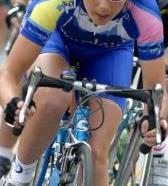How To Address Cycling Knee Pain, narrowing the root cause
Posted by Matt Russ on 12th Mar 2018
 Knee pain is one of the more common issues cyclists face once they proceed from the recreational level to regular riding. Knee pain with cyclists can be a tricky thing to address as it is hard to narrow down the root cause. The foremost cause is an improper fit. Many cyclist begin to ramp up their riding with no fit at all; they adjust to whatever position the bike is in or make adjustments based on look/feel. This can result in a position that is not even close to one optimized for longer rides and improved leverage. A seat that is too high, low, forward, or aft can all cause various knee issues. Getting professionally fitted by a trained and experience fitter is a great place to start; preferably a SICI licensed fitter.
Knee pain is one of the more common issues cyclists face once they proceed from the recreational level to regular riding. Knee pain with cyclists can be a tricky thing to address as it is hard to narrow down the root cause. The foremost cause is an improper fit. Many cyclist begin to ramp up their riding with no fit at all; they adjust to whatever position the bike is in or make adjustments based on look/feel. This can result in a position that is not even close to one optimized for longer rides and improved leverage. A seat that is too high, low, forward, or aft can all cause various knee issues. Getting professionally fitted by a trained and experience fitter is a great place to start; preferably a SICI licensed fitter.
The second challenge with narrowing down the root cause is that is may not be necessarily a fit issue but a biomechanical one. For instance if the rider has a pre-existing meniscal tear cycling could be aggravating it. There may be adjustments that will reduce stress on the area but it can be rather hit or miss without knowing what you are dealing with. That is why I like to start with a diagnosis from an Orthopedist, especially in the case of sharp/severe pain and swelling. If you do have a knee injury such as bursitis, tendonitis, arthritis, etc., time off will generally tell you if the bike is aggravating it. Once we know what is going on biomechanically there are a variety of adjustments to take stress off of a particular area we can attempt.
Addressing the foot/pedal interface can have a drastic impact on alleviating knee pain- sometimes entirely and in a short period of time. There are five different adjustments that can be made at the foot/pedal interface. Adjusting stance with or Q factor, varus/valgus, fore/after and lateral position and float all affect the stress on various parts of the knee. Shims can compensate for leg length discrepancies but it is important to identify whether the cyclists has an actual or apparent leg length discrepancy. There is a wide range of arch types from high and stiff arches to very flat or "collapsed" arches. Varus/valgus adjustment through wedges or foot beds can limit medially/lateral motion of the knee and improve power by putting more force on the pedal spindle. It is important to note that any force or motion that is not being directed to the pedals is wasted energy, although there does need to be some motion to allow for natural biomechanics.
I find that if a seat is too high the cyclist will generally notice it as they feel like they are reaching for the pedals. I am amazed at how low a person can ride without noticing that something is wrong. A saddle that is too low saps power but also increased force on the knees, especially the front of the knee. Riders are sometimes amazed at how much better they are able to climb with a proper knee angle set. Generally a seat that is too far forward will produce anterior (front) knee stress, and one that is too far back posterior (back) knee stress.
Note that a fitter that is not trained in medicine should not be diagnosing a knee problem. Conversely a medical professional that is not trained in various fit methodologies, types of equipment, and bicycles in general should not being giving arm chair fit recommendations. Beyond the fit the rider must be in the right shoes, on the right size frame, and even on the right saddle. A good fitter has extensive knowledge in these areas and can help the cyclist in equipment selection. In a perfect setting the fitter would have experience in both backgrounds but that can be hard to find. Good communication between the medical professional and the fitter is the next best thing.


